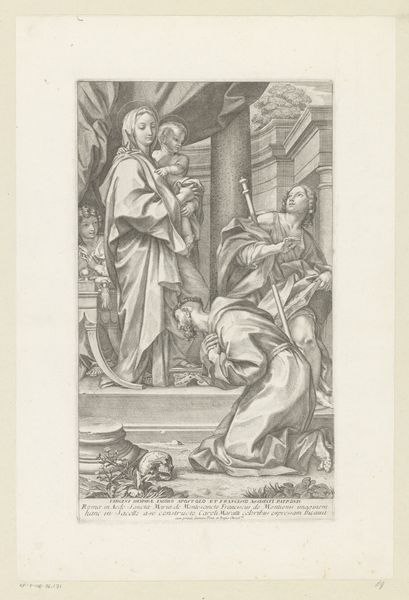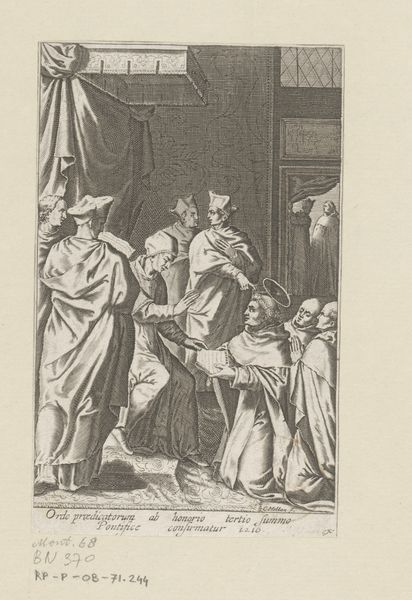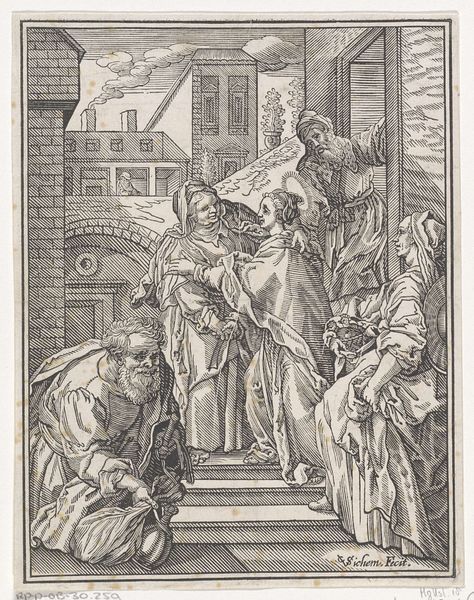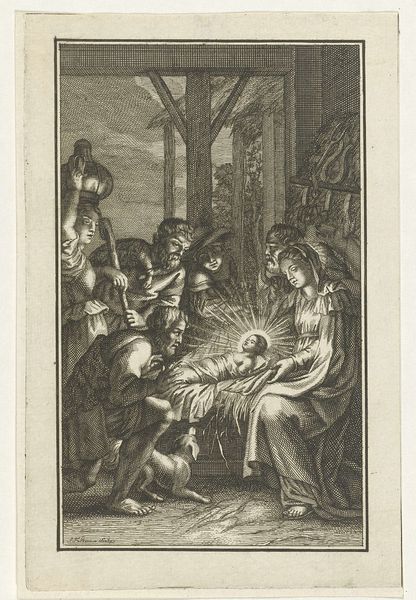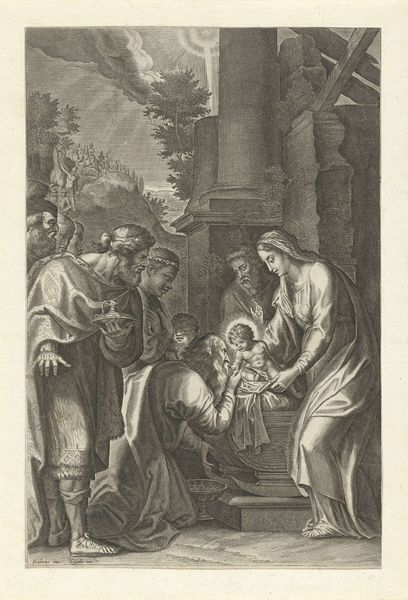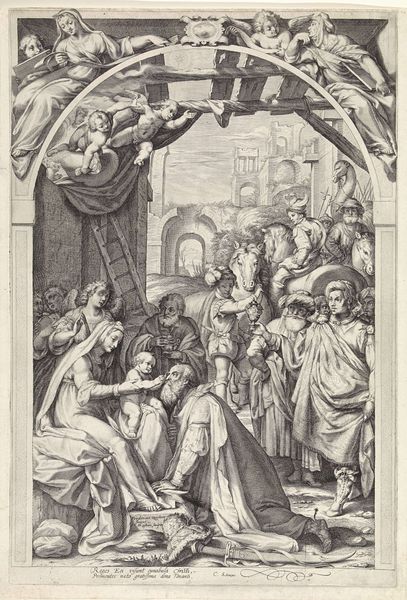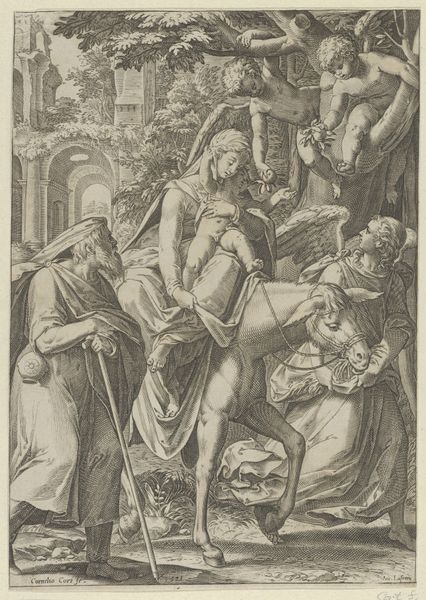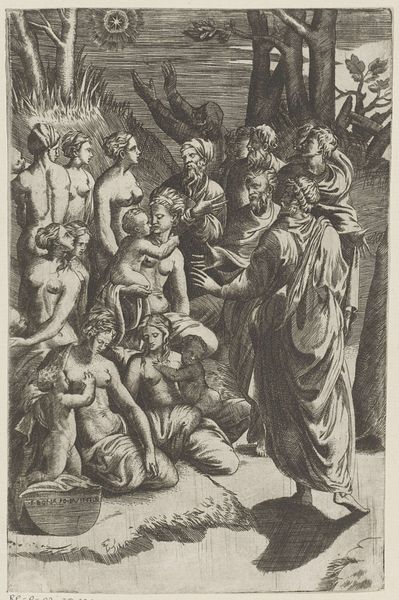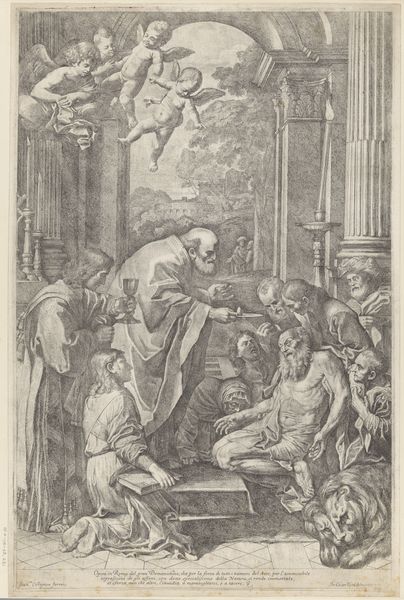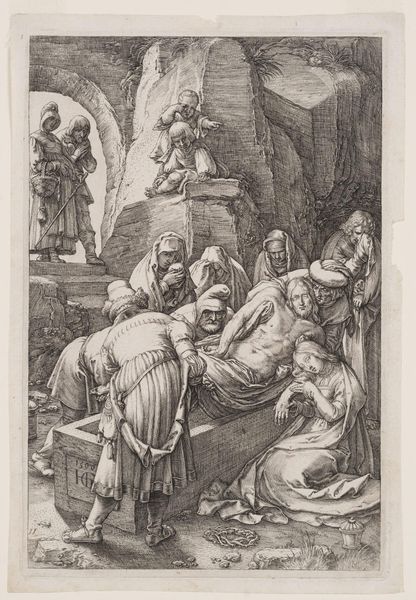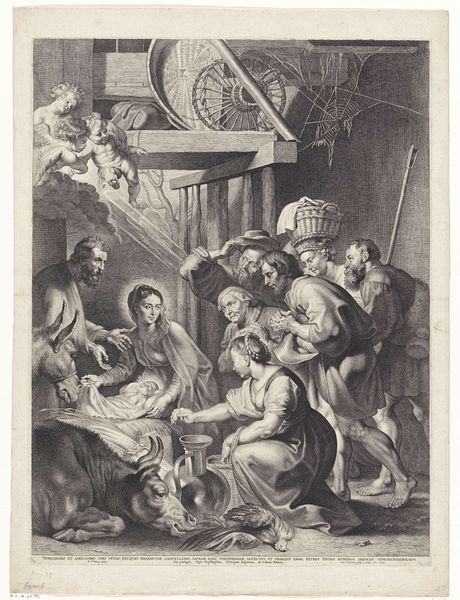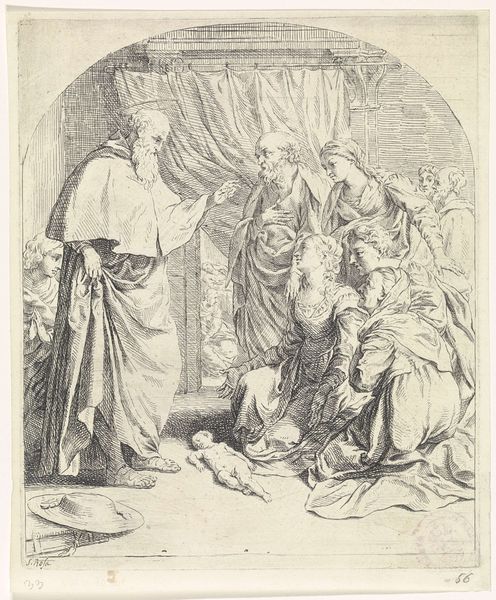
engraving
#
portrait
#
neoclacissism
#
old engraving style
#
classical-realism
#
figuration
#
history-painting
#
engraving
Dimensions: height 207 mm, width 128 mm
Copyright: Rijks Museum: Open Domain
Curator: The scene unfolding before us is "The Death of Cicero," an engraving made in 1801 by Ludwig Gottlieb Portman. It resides here, at the Rijksmuseum. First impressions? Editor: Stark, very stark. A sort of resigned dread seems to hang in the air, like the last breath of a long-fought battle. The tight composition almost suffocates. You feel like you are peering in. Curator: Yes, the sense of peeping into the intimate sphere of death is cleverly executed. Portman, working within the Neoclassical style, really zeroes in on the drama. Cicero, statesman and orator, cornered. Quite the moment he must have felt. Editor: Cicero was indeed more than just a man of words; his words held power. But even the mighty fall prey to violence, especially when their rhetoric challenges those in power. His execution feels less like a personal tragedy and more a symbolic annihilation of free thought. And the guard who carries out the order... what of him? Curator: The details are striking, aren't they? Portman captures the scene with incredibly crisp lines. And though it’s an engraving, the variations in shading really convey the emotional depth, wouldn't you agree? Almost dramatic, like stage acting. Editor: I think the scene goes far beyond mere drama. Consider the power dynamics: the Roman guard, embodiment of state control, versus Cicero, once a symbol of senatorial authority. It's a violent illustration of what happens when power protects itself. Didactic, and deeply cynical. Who holds true authority, eh? Curator: So true! And think, for a moment, about Portman creating this piece in 1801. The French Revolution, just a stone's throw in the past... Was he, perhaps, commenting on more than just ancient history? Editor: Absolutely. The French Revolution wasn't just a historical event. It was the blueprint for future struggles, an urgent argument for democratic ideals, even while illustrating the price of dissent. Curator: Well, examining "The Death of Cicero" is anything but dull. Portman gifts us with an intriguing glimpse into both past and future struggles. Editor: It reminds us that the stakes are high and perhaps always will be. This engraving is a call to arms, and a sobering depiction of their possible repercussions.
Comments
No comments
Be the first to comment and join the conversation on the ultimate creative platform.

